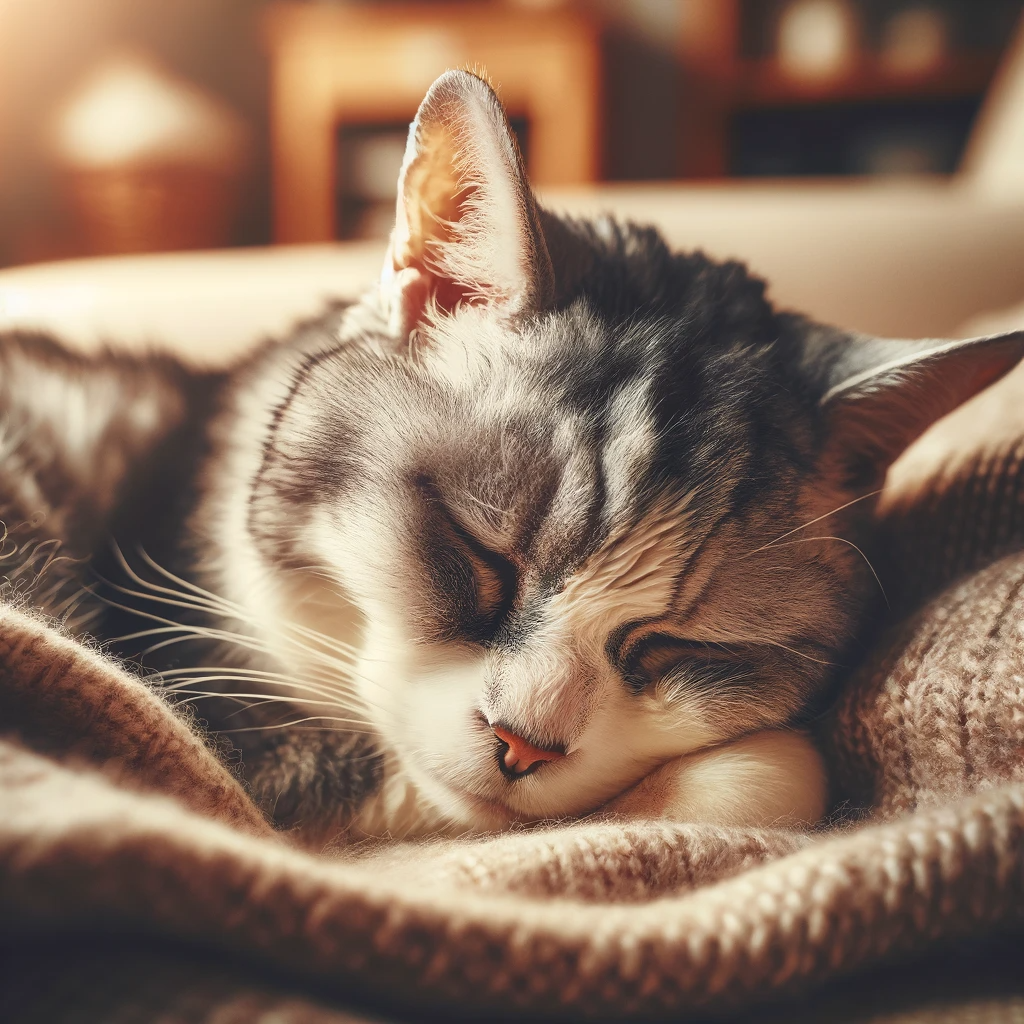Understanding Kidney Failure in Cats: Compassionate Guide for Pet Owners
Introduction to Kidney Failure in Cats
Kidney failure in cats is a condition that can profoundly affect both the pet and the owner. Often a challenging journey, it brings with it a mix of emotions, from concern to deep care. As a condition commonly seen in older cats, kidney failure, or renal failure, marks a decrease in the kidneys’ ability to function effectively. The kidneys play a crucial role in filtering waste products from the blood and maintaining a balance of electrolytes and fluids in the body. When they fail, toxins build up, leading to serious health issues. Understanding kidney failure in cats is the first step in providing the best care for your feline friend. This article aims to gently guide you through recognizing the signs, understanding the diagnosis and treatment options, and coping with the emotional aspects of managing this condition.
Identifying Early Signs of Kidney Failure
Detecting kidney failure in cats at an early stage is crucial for managing the condition effectively. Cats are masters at hiding discomfort, so it’s important for pet owners to be vigilant and recognize subtle changes. Some early signs of kidney failure include increased thirst and urination. You might notice your cat visiting the water bowl more frequently or find that the litter box needs changing more often due to increased urine volume.
Weight loss and decreased appetite are also common signs. As toxins build up in the bloodstream, they can cause nausea and a reduction in appetite, leading to gradual weight loss. Additionally, keep an eye out for changes in grooming habits. Cats suffering from kidney issues may have a dull, unkempt coat, as they lose the interest or energy to groom themselves properly.
Lethargy and a general decrease in activity levels can also indicate kidney issues. If your usually playful cat seems less interested in activity or spends more time sleeping, it could be a sign of underlying health problems.
Early detection and intervention can make a significant difference in managing kidney failure. If you notice any of these symptoms, a visit to the veterinarian is essential. They can conduct tests to confirm whether these signs are indeed related to kidney failure or another health issue.
Diagnosis and Stages of Kidney Failure in Cats
Diagnosing kidney failure in cats involves a thorough examination by a veterinarian, who will usually perform blood tests and urinalysis. These tests help evaluate kidney function by checking for elevated levels of waste products like urea and creatinine in the blood, which are normally filtered out by healthy kidneys.
Kidney failure in cats is typically classified into different stages, from mild to severe, based on the results of these tests. The early stages may show only slight elevations in waste products, while later stages will exhibit more severe abnormalities. This staging system helps veterinarians determine the most appropriate treatment and management plan.
It’s important to understand that kidney failure is often a progressive condition, meaning it can worsen over time. However, with proper management and care, many cats can enjoy a good quality of life even after a diagnosis of kidney failure. Your veterinarian can guide you through the specific needs of your cat depending on the stage of kidney failure they are in. This might include dietary changes, medications, and in some cases, fluid therapy.
Regular follow-ups with the vet are essential to monitor the condition and adjust the care plan as needed. Your vet can also help you understand what to expect as the disease progresses, empowering you with knowledge to make the best decisions for your beloved pet.
Managing Kidney Failure in Cats at Home
After a diagnosis of kidney failure, managing your cat’s condition at home becomes a key part of their care. The goal is to maintain their quality of life and slow the progression of the disease. One of the most critical aspects is dietary management. Cats with kidney failure require a special diet that is low in phosphorus, protein, and sodium but high in omega-3 fatty acids and other nutrients. These diets help reduce the workload on the kidneys and slow the progression of kidney disease. Some cats are resistant to eating this prescription diet.
Hydration is equally important. Ensure your cat has constant access to fresh water, as staying hydrated helps the kidneys function more effectively. Some cats with kidney disease may benefit from fluid therapy at home, where you administer subcutaneous fluids under the skin to help with hydration. In severe cases, intravenous fluid given at the veterinarian’s office may be necessary to lower elevated levels of waste products in the blood.
Monitoring your cat’s overall health and behavior is vital. Regular weigh-ins can help track any weight loss, a common issue in cats with kidney disease. Also, keep an eye on their eating habits, urination, and defecation patterns, as changes in these can indicate a need for adjustments in their treatment plan. If cats are vomiting more frequently, this could be a sign that kidney waste products in the blood are increasing. A consultation with a veterinarian should be made.
Creating a comfortable environment is also key. Cats with kidney disease may be more sensitive to stress, so ensure they have a quiet, comfortable place to rest. Pay attention to their comfort, and make adjustments to their living space to accommodate any mobility issues or other health concerns they may have.
Lastly, regular veterinary check-ups are essential. Your vet can monitor your cat’s kidney function, adjust their treatment plan, and address any new symptoms or complications that arise.
Medical Treatments
When managing kidney failure in cats, several medical treatments can be employed to alleviate symptoms and slow the progression of the disease. It’s important to work closely with your veterinarian to determine the best course of action for your cat’s specific needs.
- Medications: Various medications may be prescribed to manage symptoms and complications of kidney failure. These can include phosphorus binders to reduce phosphorus levels in the blood, blood pressure medications to manage hypertension, and erythropoietin to treat anemia and appetite stimulant.
- Fluid Therapy: Subcutaneous fluid therapy is commonly used in cats with kidney failure. This involves injecting fluids under the skin to help maintain hydration and flush out toxins. This can often be done at home with instruction from your vet. In severe cases, intravenous fluid given at the veterinarian’s office may be necessary.
- Dietary Management: As previously mentioned, a specially formulated renal diet is used. Some cats may be resistant to eating this food. These diets are designed to support kidney function and can be prescribed in both wet and dry food forms.
- Potassium Supplementation: Some cats with kidney disease may have low potassium levels, which can exacerbate muscle weakness and other symptoms. Potassium supplements can help correct this imbalance.
- Management of Nausea and Vomiting: Cats with kidney failure may experience nausea and vomiting. Medications can be given to manage these symptoms and encourage them to eat.
It’s crucial to remember that while these treatments can help manage the symptoms and slow the progression of kidney failure, they are not cures. Regular monitoring and adjustments to the treatment plan are essential. The aim is to maintain the best possible quality of life for your cat for as long as possible.
The Emotional Journey: Coping with Your Cat’s Illness
Coping with a cat’s chronic illness, such as kidney failure, is an emotional journey for pet owners. It’s important to acknowledge and address these feelings as part of the care process. Here are some ways to help manage the emotional impact:
- Understanding and Acceptance: Educating yourself about kidney failure can help you understand what your cat is going through. This knowledge can empower you and help in accepting the diagnosis, leading to more effective management of your cat’s condition.
- Emotional Support: Don’t hesitate to seek emotional support. This can come from friends, family, pet support groups, or professional counselors. Sharing your experiences and feelings with others who understand can be incredibly comforting.
- Self-Care: Caring for a sick pet can be draining, both emotionally and physically. It’s crucial to take care of yourself too. Ensure you’re getting enough rest, eating well, and taking time out for yourself when needed.
- Celebrating the Good Times: Focus on the quality of life you can provide for your cat and celebrate the good days. Cherish the time spent with your pet and create happy memories.
- Preparation for the Future: While it’s challenging, preparing for the eventual progression of the disease can be helpful. Discuss with your veterinarian about end-of-life care and decision-making, so you feel more prepared when the time comes.
Remember, it’s normal to feel a range of emotions, from sadness and frustration to love and gratitude. Allow yourself to feel these emotions and seek support to navigate through them.
Preparing for End-of-Life Decisions
Making end-of-life decisions for a cat with kidney failure is one of the most challenging aspects for pet owners. It’s a deeply personal decision, often filled with emotional complexity. Here are some considerations to help you prepare:
- Quality of Life Assessment: Regularly assess your cat’s quality of life. Consider their pain levels, ability to eat and drink, enjoyment of life, and overall comfort.
- Open Communication with Your Vet: Maintain honest and open communication with your veterinarian. They can provide medical insights about your cat’s condition and help you understand when it might be time to consider euthanasia.
- Understanding Euthanasia: Euthanasia is a peaceful and painless process, often seen as a final act of love to prevent unnecessary suffering. Learning about the process can help ease some of the fear and uncertainty surrounding it.
- Emotional Preparedness: Prepare yourself emotionally for the loss of your pet. It’s okay to grieve and feel sad. Some people find it helpful to plan a small ceremony or ritual to say goodbye, which can be a meaningful part of the grieving process.
- Support Systems: Surround yourself with supportive family, friends, or support groups who understand the love for a pet. They can provide comfort and understanding during this difficult time.
- Celebrating Their Life: After your pet has passed, find ways to celebrate their life. This can be through creating a photo album, planting a tree in their memory, or simply sharing stories about the joy they brought into your life.
End-of-life decisions are never easy, but being prepared can provide some comfort and peace. Remember, it’s about ensuring the best possible experience for your beloved pet during their final days. The article, “When Should I Put My Cat Down: Navigating Farewells,” may offer valuable insights on navigating this challenging journey.
Conclusion
Navigating through kidney failure in cats is a journey filled with care, love, and at times, difficult decisions. From recognizing the early signs to managing the condition at home and understanding medical treatments, it’s about providing the best possible quality of life for your beloved feline companion. Remember, you’re not alone in this journey. The emotional impact is significant, and seeking support, whether from friends, family, or professionals, is essential.
Making end-of-life decisions is arguably the most challenging part, but it’s also a compassionate choice to prevent suffering. Celebrate the life you’ve shared with your cat, and take comfort in knowing that you’ve provided them with love and care throughout their life.
Kidney failure in cats is a complex condition, but with the right knowledge and support, you can navigate this path with compassion and understanding. Always remember that each day with your pet is a gift, and cherish the time you have together.
Other Resources
For further information and support on kidney failure in cats and related topics, here are some resources you may find helpful:
- International Renal Interest Society (IRIS): www.iris-kidney.com
- Offers detailed information on the staging and treatment of kidney disease in cats, including guidelines and resources for veterinarians and pet owners.
- Cornell Feline Health Center: www.vet.cornell.edu/departments-centers-and-institutes/cornell-feline-health-center

